A bit of the old ultra-violence
Through Dante’s hell to the bruising world of Tom and Jerry
03 February 2022
When I was looking at Japanese woodblock prints this one caught my eye. Damn near took it out actually, it’s so kinetic it ought to come with safety glasses.
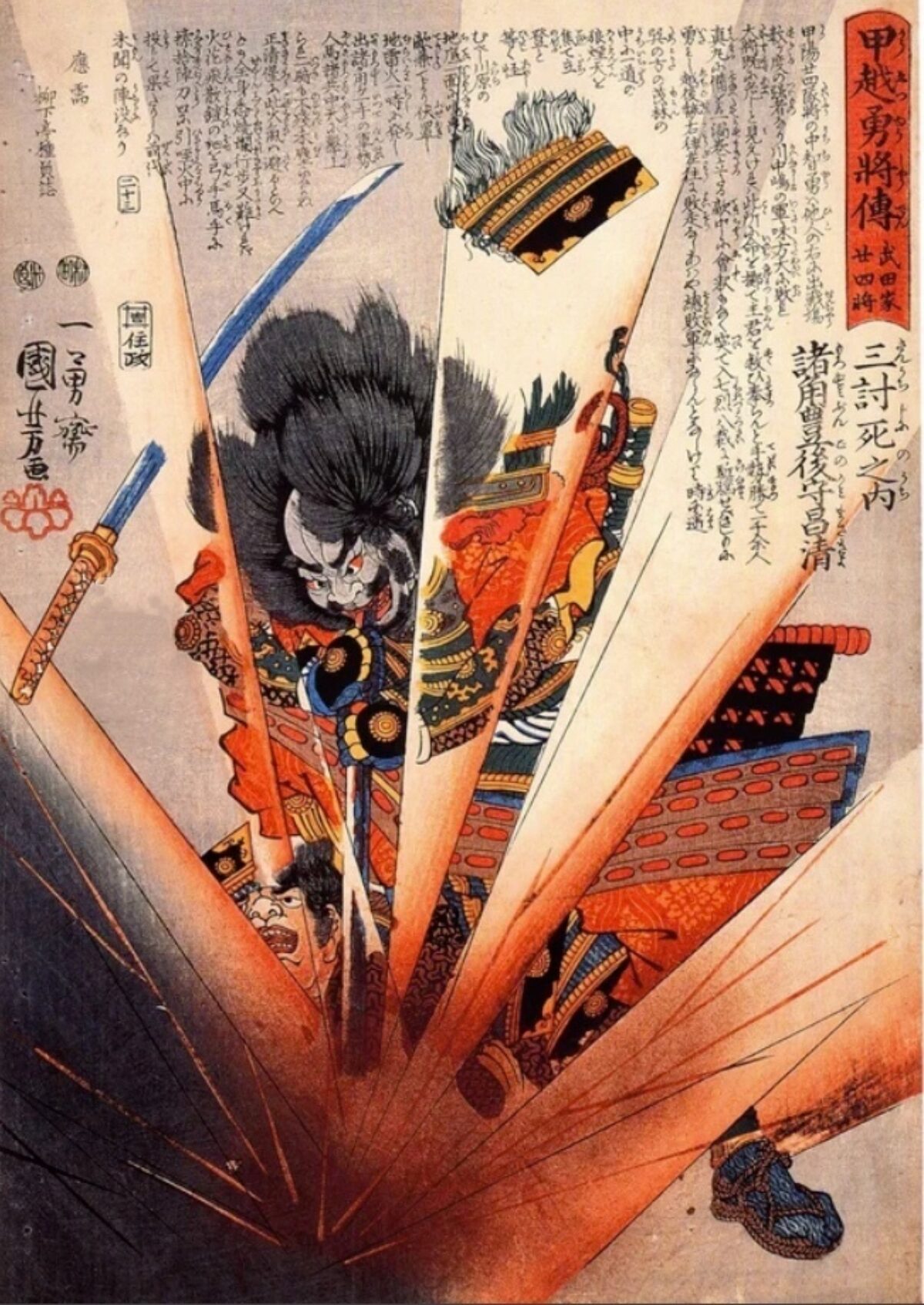
Published as a print in 1849, it shows Morozumi Masakiyo, Lord of Bungo, and retainer of the Takeda being blown up whilst committing suicide with his sword.
Moving quickly past the obvious complications of Masakiyo’s violent demise, that intense dynamic visual force still influences contemporary Japanese imagery.
You’ll find a bit of the old ultra-vi cropping up in all kinds of places - comics, anime and in-between the goal posts.

While we’re in a sporting mood - Immortal Combat
Welcome to tonight’s match up for falsifiers and counterfeiters here in Dante’s hell.
In the 8th circle of hell, we have two damned souls condemned to fight for eternity refereed by a flying demon who cheerfully enjoys Dante’s discomfort.
Biting, we have Gerald Schicchi, an embezzler and, having a bit of trouble at the moment is Capocchio, a heretic. Ringside we have Dante and his tour guide Virgil.
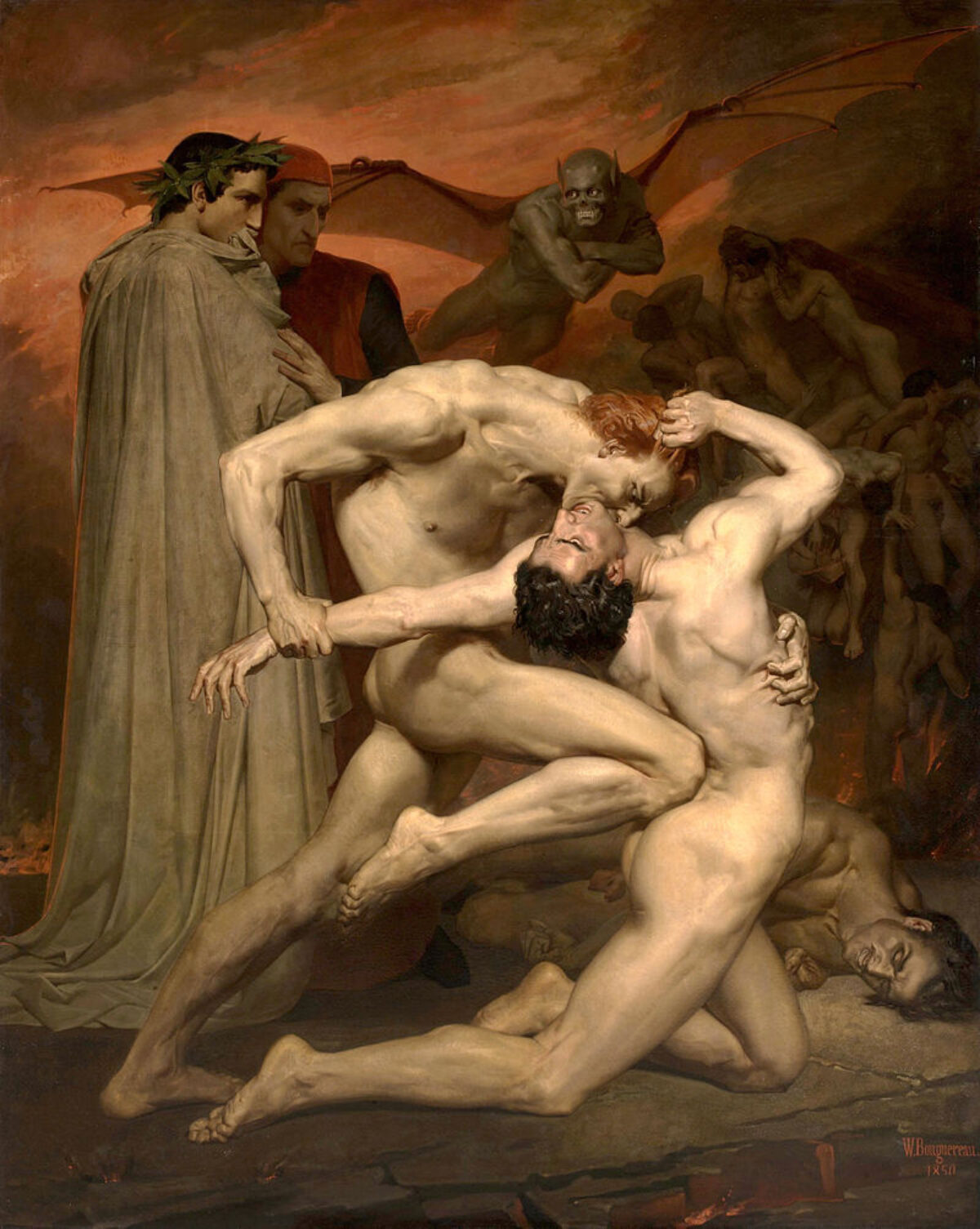
It's beautiful and horrifying.
Bouguereau freezes the moment like a sports photographer.
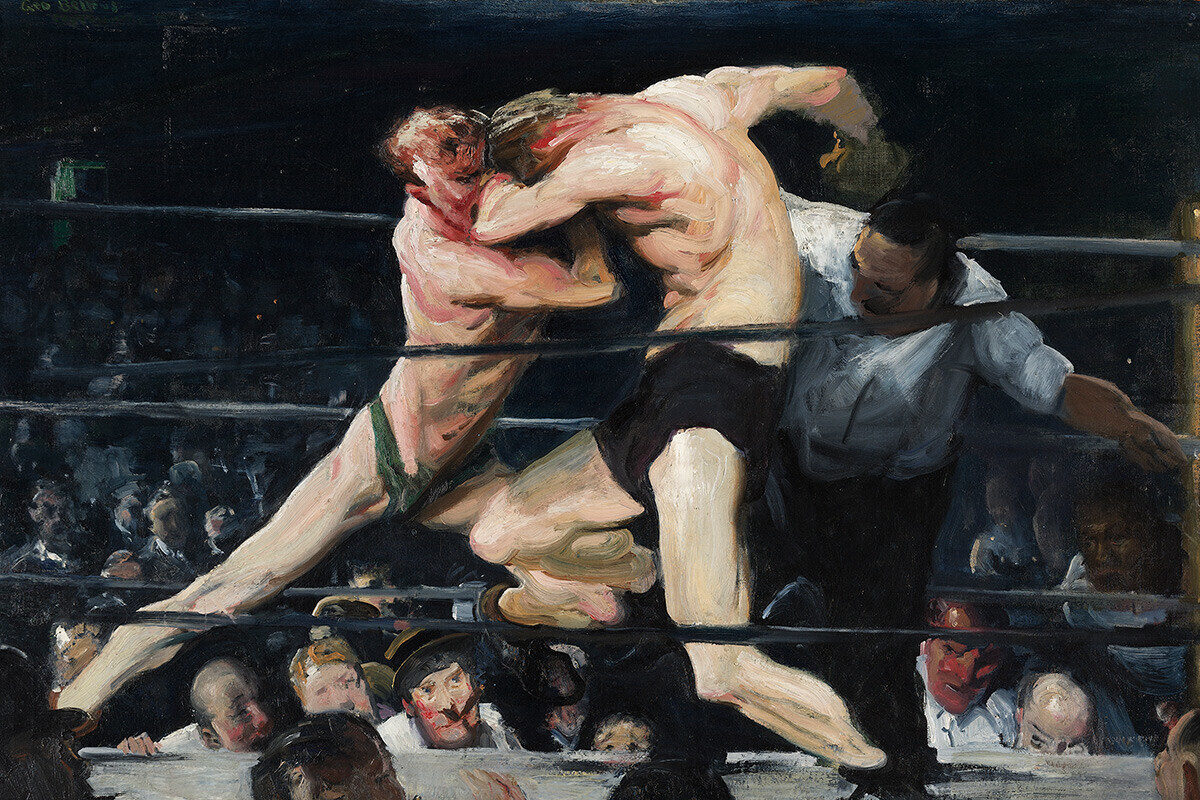
"Stag at Sharkey's"
A ‘Stag’ was a term used at Sharkey’s private athletic club club in New York for a temporary member who was game for a boxing match.
Pugilism back then had a language of its own.
A boxer’s head was known as the nob, the attic, the knowledge box, the toploft or the brain canister. Blows were delivered by the mitt or box of fives to the peepers, the ivories or right in the tripe-shop.
A burster was knock-out punch that may have lead to seeing shooting stars, to bung up an eye was to give a black eye (‘a peeper in mourning’), noses got smellers, snorters and snufflers and one’s earhole could cop a lugger.
Boxers would tap their opponent’s ‘claret’.
"Stag at Sharkey's" isn’t beautiful or accurate but it captures the truth of a fight.
What are Tom and Jerry doing here?
The names ‘Tom and Jerry’ have their history in pugilism too.
On 15 July 1821, Egan published Life in London, ‘a faithful portrait of high and low life in east and west London'.
Egan’s stories were about two men and their friends as they went on rambles and sprees and Egan incorporated the slang of the day, much it coming from the boxing world.
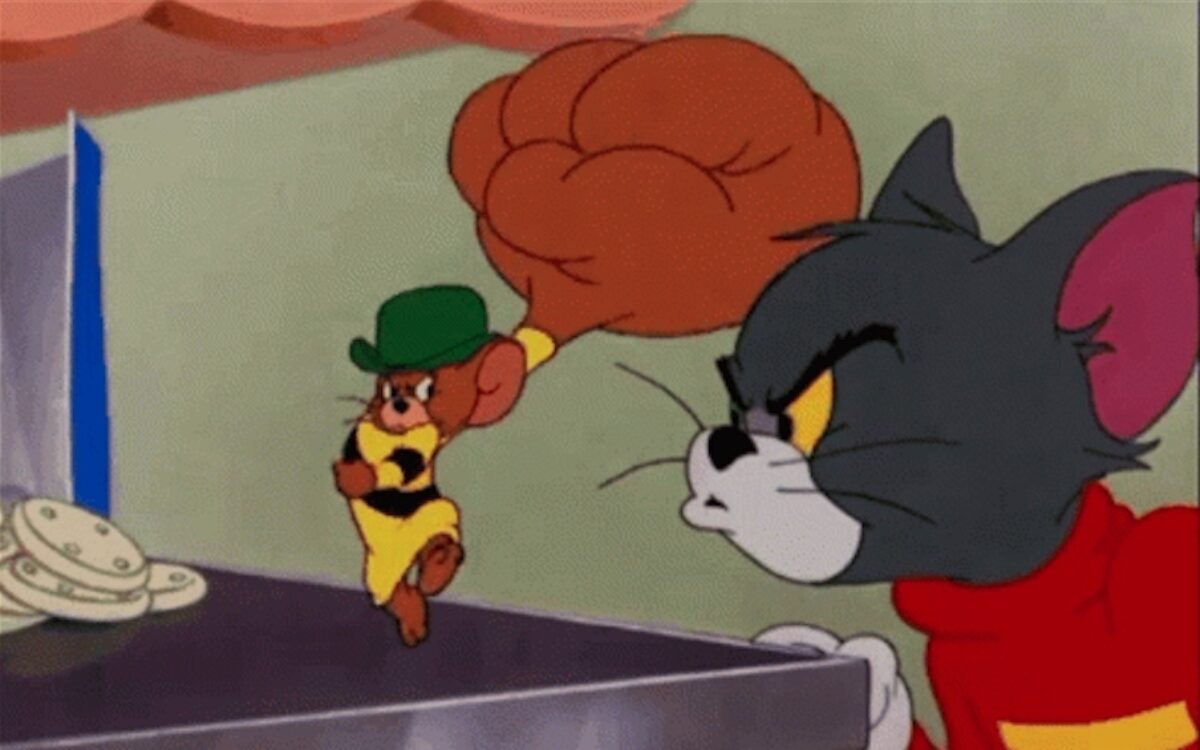
The principal characters in Egan’s urban adventures were Jerry Hawthorn and his elegant friend Corinthian Tom – Tom and Jerry.
In 1821 W.T. Moncrieff, a successful dramatist and theater manager of the day wrote a play “Tom and Jerry, or, Life in London” based on Egan’s Life of London characters. The play with its lively pugilistic slang was so successful it was taken to the US where it launched a Tom and Jerry craze.
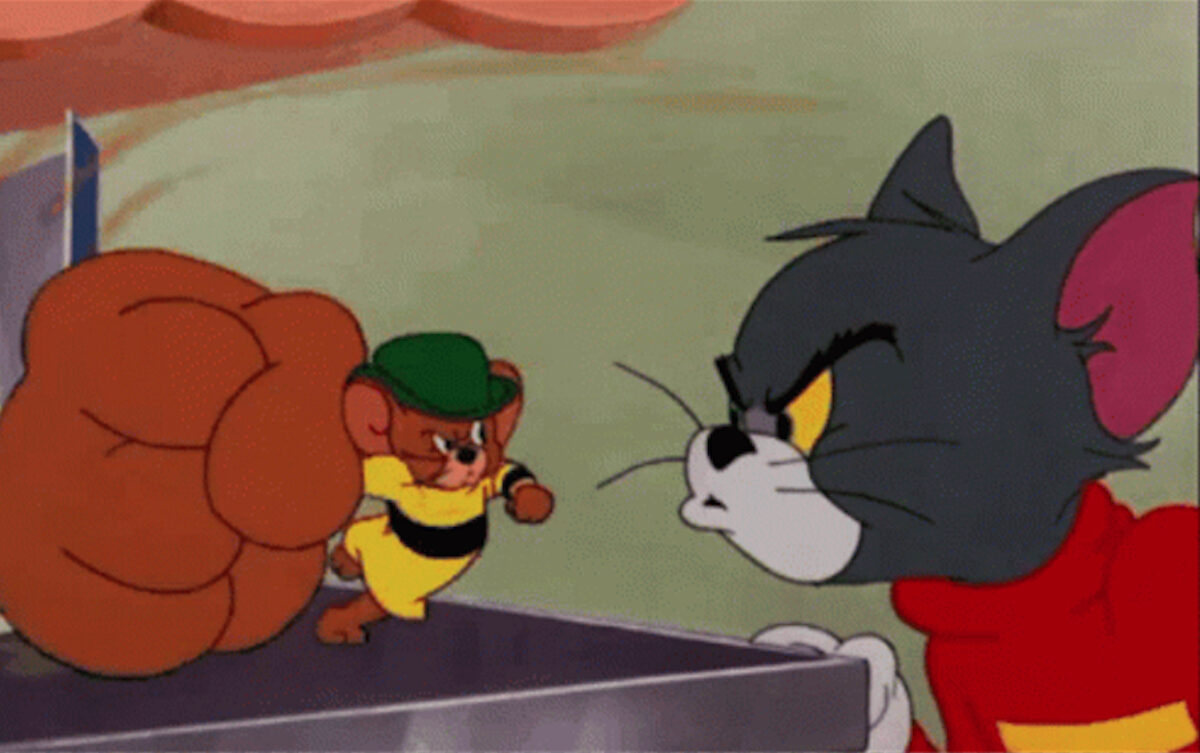
Cheap, rough taverns were ‘Tom and Jerry shops’, ‘Tom and Jerry gangs’ went on ‘Tom-and-Jerry frolics’, which usually featured young men in the picking of drunken fights and the destruction of property. Tom and Jerry became proverbial for young men causing disorder.
Despite this, the British Library website claims ‘there is no solid evidence to suggest that they influenced the creation of the cartoon cat and mouse duo of same name.’
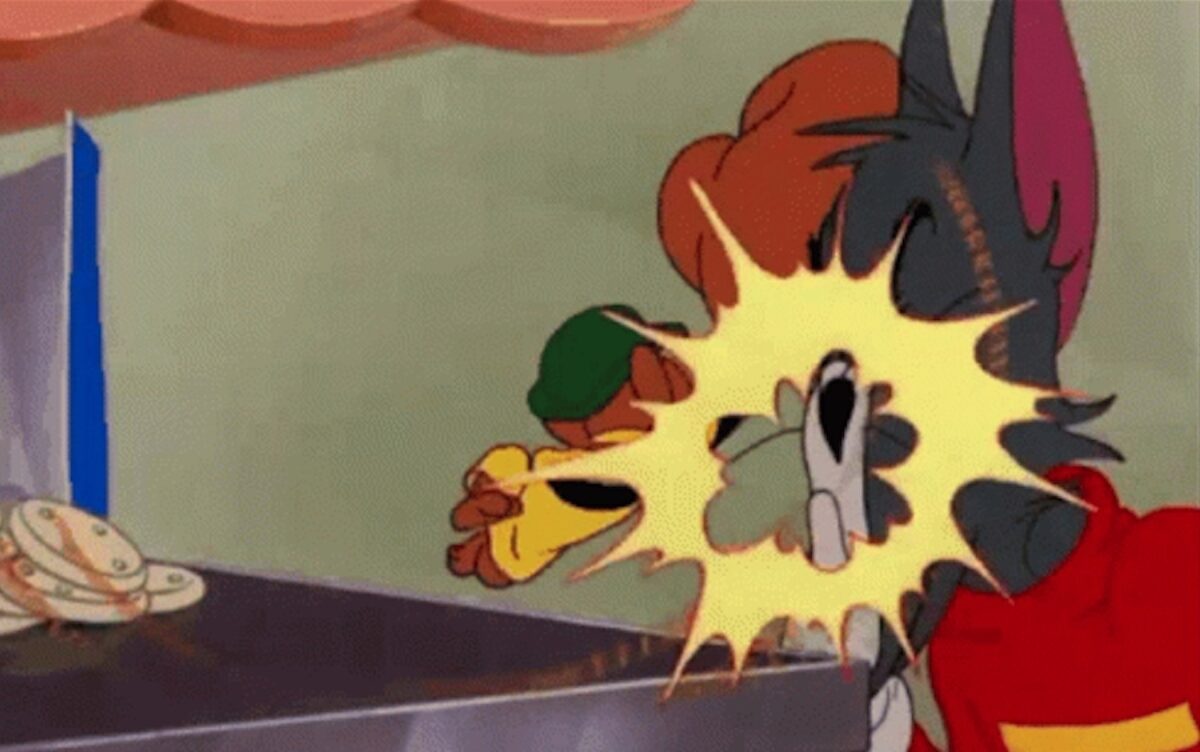
Fight me.
